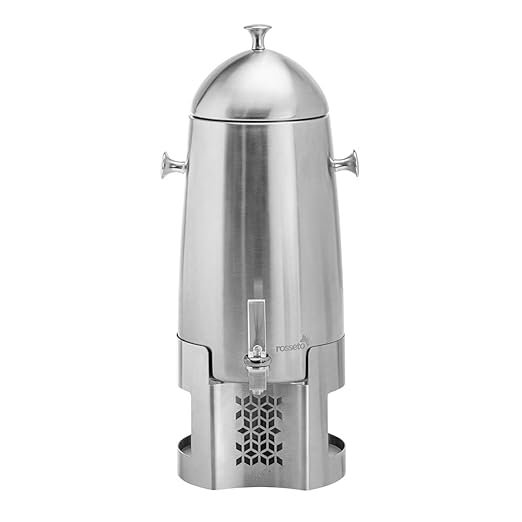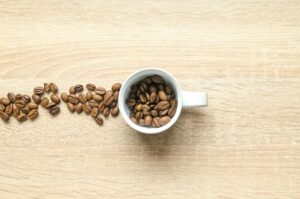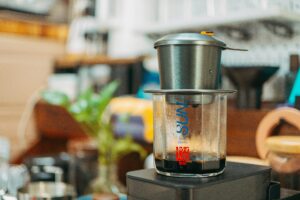Introduction
There’s nothing quite like the experience of sipping on a perfectly brewed cup of coffee from your favorite café. The rich aroma, the balanced flavors, and the comforting warmth all combine to create a moment of pure bliss. But what if you could recreate that experience in the comfort of your own home? For coffee lovers, mastering the art of making café-quality coffee at home is both a rewarding and cost-effective endeavor. In this guide, we’ll walk you through everything you need to know to brew coffee that’s just as good—if not better—than what you’d find at your local café.
Why Make Coffee at Home?
Before diving into the how-to, let’s explore why making coffee at home is worth your time and effort:
- Cost Savings: Regular visits to your local café can add up quickly. Making your coffee at home can save you a significant amount of money over time.
- Customization: When you make your coffee, you have complete control over every aspect—from the type of beans and grind size to the brewing method and add-ins.
- Convenience: No need to run out for your morning cup. With the right tools and knowledge, you can enjoy barista-quality coffee without leaving your home.
- Experimentation: Home brewing allows you to experiment with different beans, brewing methods, and recipes to find your perfect cup.
Essential Equipment for Home Brewing
To make café-quality coffee at home, you’ll need some essential equipment:
- Coffee Beans: The foundation of any great cup of coffee is high-quality beans. Look for freshly roasted beans from reputable sources.
- Grinder: A good grinder is crucial for achieving the right grind size, which directly impacts the flavor of your coffee. Burr grinders are recommended for their consistency.
- Coffee Maker: Depending on your preferred brewing method, you’ll need a coffee maker. Common options include drip coffee makers, French presses, pour-over setups, and espresso machines.
- Kettle: A gooseneck kettle offers precise control over water flow, which is especially important for methods like pour-over.
- Scale: Using a scale ensures you measure your coffee and water accurately for a consistent brew.
- Filters: If you’re using a drip coffee maker or pour-over setup, make sure you have the appropriate filters.
- Milk Frother: If you enjoy lattes or cappuccinos, a milk frother is essential for creating creamy, frothy milk.
Step-by-Step Guide to Brewing Café-Quality Coffee
Step 1: Choose Your Beans
Start with high-quality, freshly roasted beans. Consider trying beans from different regions to explore a variety of flavors. Popular types include:
- Arabica: Known for its smooth, complex flavor.
- Robusta: Offers a stronger, more bitter taste with higher caffeine content.
- Single-Origin: Beans from a specific region, offering unique flavor profiles.
Mosaic 3 Gal. Coffee Urn with Brushed Stainless Steel

- Reusable
- Manual
- 3 Gallons
- Stainless Steel
Step 2: Grind Your Beans
Grinding your beans just before brewing helps preserve their freshness and flavor. The grind size will depend on your brewing method:
- Coarse Grind: Ideal for French press and cold brew.
- Medium-Coarse Grind: Suitable for Chemex and drip coffee makers.
- Medium Grind: Works well with pour-over methods like Hario V60.
- Fine Grind: Essential for espresso machines.
Step 3: Measure Your Coffee and Water
Using a scale, measure your coffee and water to ensure consistency. A common ratio is 1 to 15 (1 gram of coffee to 15 grams of water), but feel free to adjust based on your preference.
Step 4: Heat Your Water
Heat your water to the ideal brewing temperature, typically between 195°F and 205°F. Avoid boiling water, as it can scorch the coffee and create a bitter taste.
Step 5: Brew Your Coffee
Drip Coffee Maker
- Place a filter in the basket and add your ground coffee.
- Pour the measured water into the reservoir.
- Start the machine and let it brew.
French Press
- Add coarsely ground coffee to the French press.
- Pour hot water over the grounds, ensuring all are saturated.
- Stir gently and place the lid on, but do not press down.
- Let it steep for about 4 minutes, then slowly press the plunger down.
Pour-Over
- Place a filter in the dripper and rinse it with hot water.
- Add medium-ground coffee to the filter.
- Pour hot water in a circular motion, starting from the center and working your way outwards. Allow the coffee to bloom for 30 seconds, then continue pouring until you reach the desired amount.
Espresso
- Fill the portafilter with finely ground coffee and tamp it down evenly.
- Lock the portafilter into the espresso machine.
- Start the machine and pull the shot, aiming for a 25-30 second extraction time.
Step 6: Customize Your Coffee
Once you’ve brewed your coffee, it’s time to customize it to your liking. Here are some ideas:
- Milk and Cream: Add steamed or frothed milk for a latte or cappuccino.
- Sweeteners: Experiment with different sweeteners like sugar, honey, or flavored syrups.
- Flavorings: Add a dash of cinnamon, cocoa powder, or vanilla extract for extra flavor.
Step 7: Enjoy!
Pour your coffee into your favorite mug, sit back, and savor the fruits of your labor. Enjoying a café-quality cup of coffee at home is a truly satisfying experience.
FAQs
How can I keep my coffee beans fresh?
Store your coffee beans in an airtight container away from light, heat, and moisture. For the best freshness, grind only what you need right before brewing.
What’s the best water to use for brewing coffee?
Use filtered water to avoid any off-flavors from tap water. The ideal water for brewing coffee is free of impurities and minerals that can affect the taste.
How do I clean my coffee equipment?
Regularly clean your coffee equipment to maintain the best flavor. Use mild detergent and warm water to clean your grinder, coffee maker, and other tools. For espresso machines, follow the manufacturer’s instructions for descaling and cleaning.
What’s the difference between a latte and a cappuccino?
A latte consists of espresso with steamed milk and a light layer of foam on top. A cappuccino has a more equal ratio of espresso, steamed milk, and frothy milk foam.
Can I use pre-ground coffee?
While you can use pre-ground coffee, it’s best to grind your beans just before brewing to ensure maximum freshness and flavor.
Conclusion
Making café-quality coffee at home is a rewarding process that allows you to enjoy your favorite brew without leaving your house. By investing in the right equipment, using high-quality beans, and following the steps outlined in this guide, you’ll be able to create a delicious cup of coffee that rivals your favorite café’s offerings. So why not give it a try? Your perfect cup of coffee awaits!






